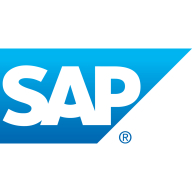

Find out what your peers are saying about Hewlett Packard Enterprise, NetApp, CTERA and others in Cloud Migration.
| Product | Market Share (%) |
|---|---|
| CloudSphere | 1.8% |
| NetApp Cloud Volumes ONTAP | 11.9% |
| Azure NetApp Files | 11.7% |
| Other | 74.6% |
| Product | Market Share (%) |
|---|---|
| SAP HANA Enterprise Cloud | 1.4% |
| Amazon AWS | 16.6% |
| Microsoft Azure | 14.9% |
| Other | 67.1% |


| Company Size | Count |
|---|---|
| Small Business | 7 |
| Midsize Enterprise | 4 |
| Large Enterprise | 16 |
CloudSphere is an intelligent cloud management platform that enables organizations to plan, optimize, secure, and scale their cloud adoption. The platform has three solutions to help organizations manage dynamic, multi-cloud environments, including cloud migration planning, cloud cost management, and cloud security posture management. By using application intelligence (AI), the platform is able to discover and collect all of the data points that collectively define an application across on-premises, hybrid, and cloud environments. Because the solution is very scalable, it can accommodate companies of all sizes.
The CloudSphere solution is ideal for:
CloudSphere Product Highlights
CloudSphere Features
CloudSphere has many valuable key features. Some of the most useful ones include:
CloudSphere Benefits
There are many benefits to implementing CloudSphere. Some of the biggest advantages the solution offers include:
SAP HANA Enterprise Cloud is a fully scalable and secure private managed cloud solution. It empowers organizations to unlock the full value of SAP HANA in the cloud - accelerating growth and innovation, driving IT and business transformation, quickly delivering business outcomes, and reducing risk.
We monitor all Cloud Migration reviews to prevent fraudulent reviews and keep review quality high. We do not post reviews by company employees or direct competitors. We validate each review for authenticity via cross-reference with LinkedIn, and personal follow-up with the reviewer when necessary.